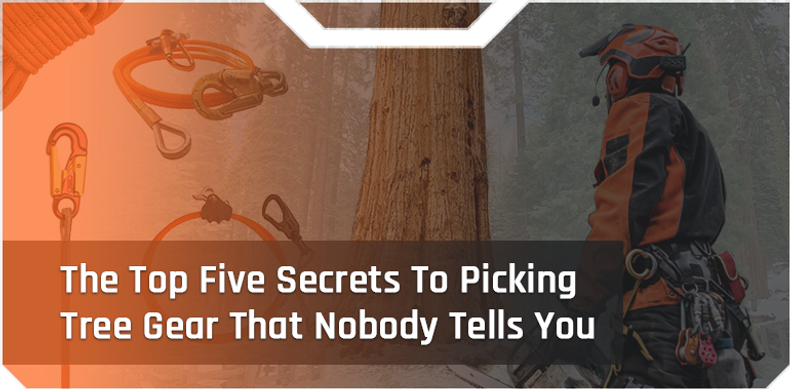Psst…
Wanna know a secret?
How about exactly five secrets?
Here are some tips for arborists that people don’t talk about. We’re gonna pass on some lifehacks about tree climbing gear and arborist gear. If you tell anyone, we will know though and we may have to kick you out of our secret society.
We heard you are cool and you can keep a secret, so we’re going to clue you in.
1. Areas Where You Can Spend Less Money
Getting together arborist gear is expensive - way more expensive than it seems like it should be.
You probably are wondering how you can save some money getting started. If so, we don’t blame you, so here is a short list of things that you can get the cheap versions of gear and not stress too much about it.
High-Quality Cheap Alternatives To Expensive Gear:
- Disposable Eye Protection - Your eye protection gear is going to get dinged up while you work anyway, so you may as well go cheap and get a disposable version.
- Disposable Gloves - When you are getting started, you are fine skipping out on investing in premium gloves. Disposable climbing gloves made with heavy latex or vinyl will work for you.
- Rigging Ropes With A Nylon Core - The secret about arborist rigging ropes or bull ropes is that bulls with a nylon core will save you both in the short-term and in the long run. They are a little cheaper to buy and will last longer than other bull ropes.
2. How To Avoid Rope Milking
Rope milking is a term for the nastiness that comes with a rope sleeve getting all wrinkly and gross on your kernmantle ropes.
People do all sorts of wild things to “pre-milk” their ropes so that the rope cover won’t get bunched up when they start climbing and pulling on the rope. Just look up tutorials on “how to milk a rope” and you will see for yourself.
What people really don’t talk about much is buying ropes that don’t milk as much in the first place.
A rope with a nylon core and polyester cover will give you minimal milking to start with.
If you still want to go through the ceremonial ritual of pre-milking your rope for the fun of it, none of us are going to stop you, but it really is far less necessary with a rope with the right construction.
Rope milking will lead to your hands cramping, the cover getting worn out, and ultimately replacing your tree climbing ropes way more often.
3. All Arborist Climbing Ropes Are Static Ropes
Seriously.
People talk about how important it is that you choose a static tree climbing rope, but all arborist ropes are static ropes.
“Static ropes” are ropes with lower stretch. The difference in stretch and elongation between tree climbing ropes and dynamic ropes for rock climbing is really very radical.
There are static tree-climbing ropes and there are tree climbing ropes that are more static.
There is no such thing as a dynamic arborist climbing rope.
4. All Throw Weights Are Pretty Much Created Equal
It really doesn’t make much of a difference what sort of throw ball you buy. They pretty much all do the same thing. They are pretty much all nylon bags filled with led or some other material of a similar weight class.
When you choose your throw weight, go with whatever is cheapest, whatever has the coolest pattern, or whatever will look the most different from your coworkers’ gear. It really makes very little difference.
5. Start With A 24 Strand Climbing Rope
Ropes with a high strand count (for example a 32 strander) are more bouncy (static). They require less work from you while you climb.
Ropes with lower strand counts (say, a 3 strand rope) are less bouncy and give you more control. They require more rope from you while you climb, but will give you extra stability.
When you are starting to climb, you really don’t want to be working too hard. You are already going to have a harder time than the guys with more experience.
You also will want some stability because you will still be getting used to monkeying around.
If you go with a 24 Strand Climbing Rope, you will probably find that perfect middle ground.
Summing Up That Info:
- Ropes With More Strands Are More Bouncy And Give Less Stability
- Ropes With Fewer Strands Require More Work While Climbing But Are More Stable
- 24 Strand Ropes Are Great For Beginners As They Offer A Good Balance
Now That You Know The Secrets, Share Them With Great Discretion
Now that you have read our guide to arborist gear, you are an expert and you know everything that you need to know to be an awesome tree climbing son of a gun. You should make sure you tell everyone at work and see how they react.
All joking aside, we hope that this guide was helpful and that you now feel a little more comfortable in choosing your gear.





